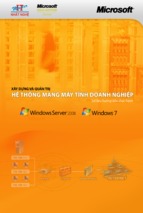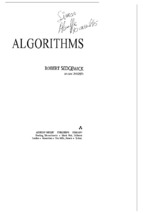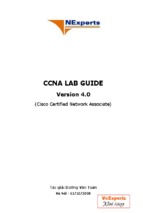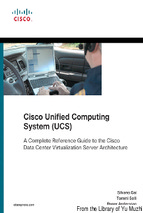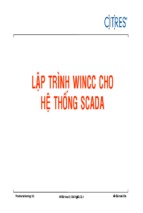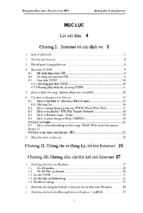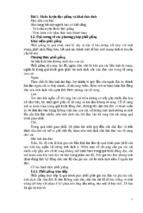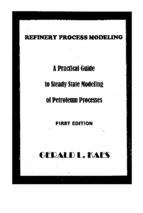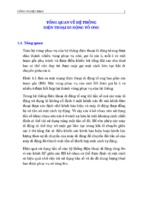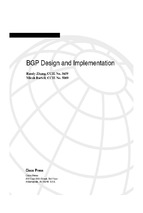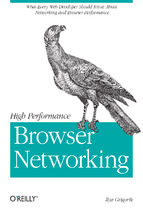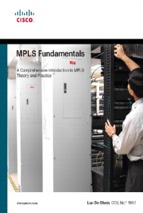This page intentionally left blank
Radio Network Planning
and Optimisation for UMTS
This page intentionally left blank
Radio Network Planning
and Optimisation for UMTS
Edited by
Jaana Laiho
Achim Wacker
Tomas Novosad
All of Nokia, Finland
JOHN WILEY & SONS, LTD
Copyright © 2002 by John Wiley & Sons, Ltd
Baffins Lane, Chichester,
West Sussex, PO19 1UD, England
National 01243 779777
International (+44) 1243 779777
e-mail (for orders and customer service enquiries):
[email protected]
Visit our Home Page on http://www.wiley.co.uk or http://www.wiley.com
Reprinted March 2002
All Rights Reserved. No part of this publication may be reproduced, stored in a retrieval system, or transmitted, in any
form or by any means, electronic, mechanical, photocopying, recording, scanning or otherwise, except under the
terms of the Copyright Designs and Patents Act 1988 or under the terms of a licence issued by the Copyright
Licensing Agency, 90 Tottenham Court Road, London, W1P 9HE, UK, without the permission in writing of the
Publisher, with the exception of any material supplied specifically for the purpose of being entered and executed on a
computer system, for exclusive use by the purchaser of the publication.
Neither the author(s) nor John Wiley & Sons, Ltd accept any responsibility or liability for loss or damage occasioned
to any person or property through using the material, instructions, methods or ideas contained herein, or acting or
refraining from acting as a result of such use. The author(s) and Publisher expressly disclaim all implied warranties,
including merchantability of fitness for any particular purpose. There will be no duty on the authors or publisher to
correct any errors or defects in the software.
Designations used by companies to distinguish their products are often claimed as trademarks. In all instances
where John Wiley & Sons, Ltd is aware of a claim, the product names appear in initial capital or capital letters.
Readers, however, should contact the appropriate companies for more complete information regarding trademarks
and registration.
Other Wiley Editorial Offices
John Wiley & Sons, Inc., 605 Third Avenue,
New York, NY 10158-0012, USA
WILEY-VCH Verlag GmbH
Pappelallee 3, D-69469 Weinheim, Germany
John Wiley & Sons Australia Ltd, 33 Park Road, Milton,
Queensland 4064, Australia
John Wiley & Sons (Canada) Ltd, 22 Worcester Road
Rexdale, Ontario, M9W 1L1, Canada
John Wiley & Sons (Asia) Pte Ltd, 2 Clementi Loop #02-01,
Jin Xing Distripark, Singapore 129809
Library of Congress Cataloging-in-Publication Data
Radio network planning and optimisation for UMTS / edited by Jaana Laiho, Achim
Wacker, Tomas Novosad.
p. cm.
Includes bibliographical references and index.
ISBN 0-471-48653-1
1. Global system for mobile communications. 2. Radio-Transmitters and trstnsmission.
I. Laiho, Jaana. II. Wacker Achim. III. Novosad, Tomas.
TK5103.483 .R34 2001
621 .382-dc21
2001045566
British Library Cataloguing in Publication Data
A catalogue record for this book is available from the British Library
ISBN 047148653 1
Typeset in Times by Deerpark Publishing Services Ltd, Shannon, Ireland.
Printed and bound in Great Britain by T J International Ltd, Padstow, Cornwall.
This book is printed on acid-free paper responsibly manufactured from sustainable forestry, in which at least two trees
are planted for each one used for paper production.
Images on cover were supplied by Nokia Corporate Communications, Finland.
Contents
Preface
Acknowledgements
Abbreviations
1
2
Introduction
xi
xiii
xv
1
Jaana Laiho, Achim Wacker, Tomds Novosad, Peter Muszynski and Wolfgang Steffens
1.1
A Brief Look at Cellular History
1.2
Introduction to Radio Network Planning and Optimisation for UMTS
1.3
Future Trends
1
2
6
Introduction to WCDMA for UMTS
9
Tomds Novosad, David Soldani, Kari Sipila and Tero Kola
2.1
Mathematical Background to Spread Spectrum CDMA Systems
2.1.1
Multiple Access
2.1.2
Spread Spectrum Modulation
2.1.3 Tolerance to Narrowband Interference
2.2
Direct Sequence Spread Spectrum System
2.2.1
Modulation Example
2.2.2 Tolerance to Wideband Interference
2.2.3 Operation in Multipath Environments
2.3
CDMA in Cellular Radio Networks
2.3.1
Universal Frequency Reuse
2.3.2 Soft Handover
2.3.3 Power Control
2.4
WCDMA Logical, Transport and Physical Channels
2.4.1 High-Level UMTS Architecture Model
2.4.2 Radio Interface Protocol Architecture and Logical Channels
2.4.3 Transport Channels
2.4.4 Physical Channels and Mapping of Transport Channels (FDD)
2.4.5 Timing and Synchronisation in UTRAN (FDD)
2.4.6 Spreading, Scrambling and Channelisation Concepts
2.5
WCDMA Radio Link Performance Indicators
2.5.1 Definitions
2.5.2 Classification According to Multipath Channel Conditions and Services
2.5.3 Link-Level Simulation Principles
2.5.4 Physical Layer Measurements Supporting the Measurement of Link-Level
Performance in a Live Network
References
9
9
10
11
12
12
14
15
16
16
16
17
18
18
19
26
34
48
51
57
57
61
65
70
72
vi
3
Contents
WCDMA Radio Network Planning
Achim Wacker, Jaana Laiho and Kimmo Terava
3.1
Dimensioning
3.1.1 WCDMA-Specific Issues in the Radio Link Budgets
3.1.2 Receiver Sensitivity Estimation
3.1.3 Shadowing Margin and Soft Handover Gain Estimation
3.1.4 Cell Range and Cell Coverage Area Estimation
3.1.5 Capacity and Coverage Analysis in the Initial Planning Phase
3.1.6 RNC Dimensioning
3.2
Detailed Planning
3.2.1 General Requirements for an RNP Tool
3.2.2 Initialisation: Defining the Radio Network Layout
3.2.3 Detailed UL and DL Iterations
3.2.4 Adjacent Channel Interference Calculations
3.2.5 Post-Processing: Network Coverage Prediction and Common Channel
Analysis
3.3
Verification of Dimensioning with Static Simulations
3.3.1 Macrocellular Network Layout
3.3.2 Introduction to the Simulator and the Simulation Parameters
3.4
Verification of the Static Simulator with Dynamic Simulations
3.4.1 Introduction to the Dynamic Simulator
3.4.2 Comparison Results
3.5
Optimisation of the Radio Network Plan
3.5.1 Ideal Case
3.5.2 Shinjuku Case
3.6
Interference in WCDMA Multioperator Environments
3.6.1
Introduction
3.6.2 ACI Simulation Cases
3.6.3 Guidelines for Radio Network Planning to Avoid ACI
References
4
75
76
77
80
80
81
83
83
87
88
101
106
114
115
118
119
120
123
125
127
129
130
133
138
138
142
149
151
Radio Resource Utilisation
153
Achim Wacker, Jaana Laiho, Tomas Novosad, David Soldani, Tero Kola and Ted Buot
4.1
Introduction to Radio Resource Management
4.2
Power Control
4.2.1 Open-Loop Power Control
4.2.2 Power Control on Downlink Common Channels
4.2.3 Inner-Loop Power Control
4.2.4 Outer-Loop Power Control
4.2.5 Power Control during Compressed Mode
4.2.6 Power Control with TPC Command Errors
4.2.7 Fast Power Control and Terminal Speed
4.3
Handover Control
4.3.1 Intrasystemlntrafrequency SHO
4.3.2 Intrasystemlntrafrequency Hard Handover
4.3.3 Intrasystemlnterfrequency Handover
4.3.4 Intersystem Handover
4.3.5 Handover Measurement Reporting
4.3.6 Compressed Mode
4.4
Congestion Control
4.4.1 Definition of Air Interface Load
4.4.2 Admission Control
4.4.3 Packet Scheduling
4.4.4 Load Control
153
154
154
155
157
162
164
165
166
166
166
167
168
168
169
177
178
178
179
181
187
Contents
vii
4.5
Resource Management
4.5.1 The Tree of Orthogonal Channelisation Codes in Downlink
4.5.2 Code Planning
4.6
Impact of RRU on Network Performance
4.6.1 Impact of Fast Power Control and SHO on Network Performance
4.6.2 RRM Optimisation Examples
References
189
189
190
194
194
204
211
WCDMA-GSM Co-Planning Issues
213
Kari Heiska, Tomas Novosad, Pauli Aikio and Josef Fuhl
5.1
Radio Frequency Issues
5.1.1 Thermal Noise
5.1.2 Man Made Noise
5.1.3 Interference Scenarios
5.1.4 Interference Reduction Methods
5.2
Noise Measurements
5.2.1 Acceptable RF Environment
5.2.2 Conducting Measurements in a Real Environment
5.2.3
Measurement Results
5.2.4 Conclusions
5.3
Radio Network Planning Issues
5.3.1 Co-Planning Process
5.3.2 Transmission Planning
5.4
Narrowband and WCDMA System Operation in Adjacent Frequency Bands
5.4.1 Interference Mechanisms
5.4.2 Worst-case Analysis
5.4.3
Simulation Case Study with Static Simulator
5.4.4 Capacity Reduction
5.4.5
Summary and RNP Guidelines
References
213
214
215
215
216
217
217
219
221
224
225
225
231
232
234
237
238
252
256
257
Cell Deployment
259
Terhi Rautiainen, Achim Wacker and Jaana Laiho
6.1
Introduction
6.2
Roll-out
6.3
Hierarchical Cell Structures in WCDMA Networks
6.3.1 Network Operation Aspects
6.3.2 Case Study Frequency Reuse in Micro- and Macrocell Networks
6.3.3 Concluding Remarks
References
259
259
261
262
264
277
211
Coverage and Capacity Enhancement Methods
279
Chris Johnson, Juha Ylitalo and Achim Wacker
7.1
Introduction
7.2
Techniques for Improving Coverage
7.2.1 Uplink and Downlink Coverage-limited Scenarios
7.2.2 Link Budget Analysis
7.3
Techniques for Improving Capacity
7.3.1 Uplink and Downlink Capacity-limited Scenarios
7.3.2 Load Equation Analysis
7.3.3 Identifying the Limiting Link
279
280
280
281
283
283
284
285
5
6
7
viii
8
9
Contents
7.4
Uplink Cell Load and Base Station Transmit Power
7.4.1
Impact of Uplink Cell Load
7.4.2 Impact of Base Station Transmit Power
7.5
Additional Carriers and Scrambling Codes
7.5.1 Impact of Additional Carriers
7.5.2 Impact of Additional Scrambling Codes
7.6
Mast Head Amplifiers and Active Antennas
7.6.1 Mathematical Background
7.6.2
Impact of Mast Head Amplifiers and Active Antennas
7.6.3
Practical Considerations
7.7
Remote RF Head Amplifiers
7.7.1
Mathematical Background
7.7.2 Impact of Remote RF Head Amplifiers
7.7.3
Practical Considerations
7.8
Higher-order Receive Diversity
7.8.1
Impact of Higher-order Receive Diversity
7.8.2 Practical Considerations
7.9
Transmit Diversity
7.9.1
Impact of Transmit Diversity
7.9.2 Practical Considerations
7.10
Beamforming
7.10.1 Mathematical Background
7.10.2 Impact of Beamforming
7.10.3 Practical Considerations
7.10.4 Impact of Fixed-beam Approach upon RRM Algorithms
7.11
Roll-out Optimised Configuration
7.11.1 Impact of Roll-out Optimised Configuration
7.11.2 Practical Considerations
7.12
Sectorisation
7.12.1 Impact of Sectorisation
7.12.2 Practical Considerations
7.13
Repeaters
7.13.1 Impact of Repeaters
7.13.2 Practical Considerations
7.14
Microcell Deployment
7.14.1 Impact of Microcells
7.15
Summary of Coverage and Capacity Enhancement Methods
References
286
286
288
290
290
292
293
294
295
297
297
298
298
299
299
300
301
303
305
307
307
307
309
310
311
312
313
315
315
316
318
318
320
322
333
322
325
328
Radio Network Optimisation Process
329
Jaana Laiho, Anneli Korteniemi, Markus Djupsund, Mikko Toivonen and Jochen Grandell
8.1
Introduction to Radio Network Optimisation
8.2
Introduction to the TMN Model
8.3
Tools in Optimisation
8.3.1 Planning Tool Level Optimisation
8.3.2 The Network Management System's Role in the Optimisation Process
8.3.3
Network Monitoring and Reporting in Optimisation
8.3.4 Field Measurement Tool
References
329
331
338
339
340
346
356
363
UMTS Quality of Service
Zhi-Chun Honkasalo, Outi Hiironniemi, Kati Ahvonen and Jaana Laiho
9.1
Quality of Service Architecture
9.1.1
High-level Reference Model for QoS
365
365
365
Contents
9.1.2 User Equipment
9.1.3 UMTS Framework
9.1.4 Interoperation with External Network
9.2
UMTS Traffic Classifications
9.2.1 User-plane Traffic
9.2.2 Control-plane Traffic
9.3
UMTS Traffic Characteristics
9.3.1 Terminology in Traffic Modelling
9.3.2 Transport Layer Protocol Characteristics
9.3.3 Common IP Services and Mapping to Transport Protocols
9.3.4 Common Application Layer Call Control Signalling
9.3.5 Common Application Layer QoS Signalling
9.3.6 Common Application Layer Media Traffic Characteristics
9.4
UMTS Traffic QoS Requirements
9.4.1 QoS Visible to End-Users
9.4.2 Call Quality Requirements
9.5
Management of QoS and Network Performance
9.5.1 A Conceptual Model of QoS
9.5.2 QoS Management Functions in 3GPP
9.5.3 Service Quality Management
References
10 RAN Autotuning and Advanced Monitoring Methods
Jaana
10.1
10.2
10.3
Laiho, Albert Hoglund and Ted Buot
Introduction
Hierarchical Structure for Automated Tuning
Examples of Autotuning Subsystems
10.3.1 Power Autotuning Subsystem
10.3.2 Autotuning in Mobility Management Subsystem
10.4
Advanced Monitoring Methods for Cellular Networks
10.4.1 Cell Grouping
10.4.2 Anomaly Detection
References
11 Other 3G Radio Access Technologies
Jussi Reunanen, Simon Browne, Pauliina Eratuuli, Ann-Louise Johansson,
Martin Kristensson, Mats Larsson, Tomas Novosad and Jussi Sipola
11.1
GSM Packet Data Services
11.1.1 Introduction
11.1.2 Modulation and Coding Schemes
11.1.3 EGPRS Radio Link Performance
11.1.4 GPRS Radio Link Performance
11.1.5 Coverage
11.1.6 Capacity Planning
11.1.7 Mobility Management
11.1.8 Frequency Hopping Techniques
11.1.9 Conclusion
11.2
Time Division Duplex (TDD) Mode of WCDMA (UTRA TDD)
11.2.1 Some TDD-specific Properties
11.2.2 System Scenarios
11.2.3 Synchronisation of Cells
11.2.4 Single-Operator TDD Network
11.2.5 Synchronisation in Multi-Operator TDD Networks
ix
366
368
369
371
371
377
378
378
380
385
388
389
390
391
392
396
403
403
404
407
410
411
411
412
414
414
424
425
426
434
436
437
437
437
438
441
445
446
449
457
461
462
463
464
465
466
467
468
Contents
x
11.2.6 Erlang Capacity for TDD Networks - A Simple Way of Estimating
Capacity per Cell
11.2.7 Coexisting TDD and FDD Networks
11.2.8 Co-located and Close Proximity Local Area BSs
11.2.9 Radio Performance
11.2.10 TDD and FDD Processing Gains
11.2.11 TDD Link Budget Examples
11.2.12 Some Other Important Parameters and their Effect on the Link Budget
11.2.13 Summary
References
Index
469
469
471
471
471
472
474
475
476
477
Preface
Second-generation mobile communication systems have enabled voice traffic to go wireless.
More important, however, have been the accompanying standardisation, compatibility and
international transparency that were simply not available to telecommunications equipment
of the previous analogue generation. These features have helped second-generation systems
to spread rapidly around the world, with very high cellular phone penetration rates in many
countries. Cellular networks have enabled certain types of communication to take place on a
massive scale that previously were not possible or were at least severely limited. In the field
of network building and expansion, the main advances have been in planning the radio and
transmission part of the network and in optimising the processes and activities necessary to
run existing operational networks.
The third-generation system known as the Universal Mobile Telecommunications System
(UMTS) introduces very variable data rates on the air interface, as well as the independence
of the radio access infrastructure and the service platform. For users this makes available a
wide spectrum of circuit-switched or packet data services through the newly developed high
bit-rate radio technology known as Wideband Code Division Multiple Access (WCDMA).
The variable bit rate and variety of traffic on the air interface have presented completely new
possibilities for both operators and users, but also new challenges in network planning and
optimisation.
This book gives detailed descriptions of the radio network planning and optimisation of
UMTS networks based on Frequency Division Duplex (FDD) WCDMA technology. One
chapter is dedicated to the General Packet Radio System (GPRS) and Time Division Duplex
(TDD) access mode of WCDMA. The optimisation and Quality of Service aspects have,
however, a wider scope than in (W)CDMA radio technology only.
Chapter 1 introduces the challenges of network planning and optimisation that operators
and the wireless industry are currently facing on the way to third-generation (3G) systems.
Chapter 2 is in three sections. The first introduces the general background of Spread
Spectrum Systems. This is followed by a section related to the Third Generation Partnership
Project (3GPP), giving a panoramic view of the UMTS architecture, interfaces and functions
that impact directly upon radio network planning. The third section discusses WCDMAspecific link performance indicators used in radio network dimensioning and planning.
Chapter 3 treats WCDMA radio network planning as a wider process that includes network
dimensioning, detailed planning, requirements for planning tools, algorithms used for calculation by WCDMA and optimisation of the radio network plan. The relationship between
network dimensioning, detailed network planning and dynamic network simulation is also
discussed.
xii
Preface
Chapter 4 covers radio resource management from the point of view of radio resource
utilisation, including power control, handover control, congestion control (admission control
and packet scheduling), resource management, and certain impacts of those functions upon
network performance.
In Chapter 5, the reader is introduced to co-planning issues involving WCDMA and the
Global System for Mobile communication (GSM), especially the effects of intersystem
interference, together with dynamic receiver properties, upon network performance. Application of these methods and results is not however limited to the GSMWCDMA scenario.
Chapter 6 discusses cell deployment strategies with respect to the number of frequencies
and the network structure. This topic is presented as a case study.
Chapter 7 treats various coverage and capacity enhancement techniques (beamforming,
higher-order receive diversity, transmit diversity, mast head amplifiers, repeaters, roll-out
optimised configuration, sectorisation, etc.). The chapter is based on an extensive set of case
studies and contains practical examples and conclusions.
Chapter 8 is devoted to the high-level radio network optimisation process, including the
Telecommunications Management Network model, the role of tools, field measurement tools,
and measurement-gathering principles of the Radio Network Controller.
Chapter 9 describes UMTS Quality of Service in respect of the model, requirements, traffic
characteristics and QoS management principles.
Chapter 10 discusses radio access autotuning and advanced monitoring concepts and
methods. First, statistical quality management principles are given, including several examples of statistical autotuning of certain configuration parameters. The second part of the
chapter is dedicated to advanced methods for cellular network monitoring.
Finally, Chapter 11 deals with two technologies different from FDD mode of WCDMA
FDD. The first is the GPRS branch in GSM technology. This has brought variable-rate packet
data traffic into the air interface of originally circuit-switched and single-data-rate serviceoriented technology. The second, the Time Division Duplex (TDD) mode of WCDMA,
represents an interesting technology for high data rate indoor users.
On the CD accompanying this book we have included a static radio network simulator
implemented in MATLAB® together with detailed descriptions of the algorithms used. Most
of the simulated scenarios are included, but not all the values presented can be reproduced
exactly, since the simulations have been done partly using earlier versions of the tool that
used slightly different strategies. The tool is delivered in its current version and state, and the
authors do not give any warranty concerning the correctness of the code. In addition, some of
the coloured figures from the book can be found on the CD in pdf-format.
The book is targeted at wireless operators, network and terminal manufacturers, university
students, frequency regulation bodies, and all those interested in radio network planning and
optimisation, especially network systems RF engineering professionals.
This book represents the views and opinions of the authors, which are not necessarily those
of their employers.
Acknowledgements
The editors would like to acknowledge the effort and time invested by their colleagues, both
from Nokia and from outside, who have contributed to this book. Apart from the editors, the
contributors were Kati Ahvonen, Pauli Aikio, Simon Browne, Ted Buot (University of
Adelaide), Markus Djupsund, Pauliina Eratuuli, Josef Fuhl, Jochen Grandell, Kari Heiska,
Outi Hiironniemi, Zhi-Chun Honkasalo, Albert Hoglund, Ann-Louise Johansson, Chris Johnson, Tero Kola, Anneli Korteniemi, Martin Kristensson, Mats Larsson, Peter Muszynski,
Terhi Rautiainen, Jussi Reunanen, Kari Sipila, Jussi Sipola, David Soldani, Wolfgang Steffens, Kimmo Terava, Mikko Toivonen and Juha Ylitalo.
The editors would like to thank Tero Ojanpera and Peter Muszynski for initial review and
comments on the scope and contents. During the development of the book, many of our
colleagues from various Nokia sites offered support and help in suggesting improvements,
finding errors or providing figures or editorial advice. The editors would like to express their
gratitude especially to Kirsi Heikkonen, Olli Karonen, Outi Keski-Oja, Pekka Kohonen,
Mikko Kylvaja, Arto Makkonen, Kimmo Raivio (Helsinki University of Technology),
Antti Toskala, Veli Voipio and Yongzhao Yang.
The publishing team at John Wiley & Sons Ltd., led by Mark Hammond has done an
outstanding job in the production of this book. We are especially grateful to Zoe Pinnock and
Sarah Hinton, with patience, guidance and assistance they helped us to keep the enormous
demanding schedule.
We would like to express special thanks to our employer, Nokia Networks, for general
permission, support and encouragement, and for providing some of the illustrations.
We also wish to acknowledge the effort of our colleagues from the Optimizer and Radio
System Research teams as well as from planning services, for their practical work in 3G
planning studies oriented in a number of cities and environments around the world and for
their valuable input from the field.
Last, but not least, we would like to say a big 'thank you' to our families and friends, as
well as those of all the authors and reviewers, for their patience and support throughout this
project.
The editors and authors welcome any comments and suggestions for improvement or
changes that could be implemented in possible future editions. The e-mail address for gathering such information is
[email protected].
Jaana Laiho, Achim Wacker and Tomas Novosad
Espoo, Finland
This page intentionally left blank
Abbreviations
2G
3G
3GPP
4G
8-PSK
A
AAL2
Abis
AC
ACI
ACIR
ACK
ACLR
ACP
ACS
AGCH
AI
AICH
AM
AMPS
AMR
AP
AP-AICH
API
APP
ARQ
AS
ASC
ASU
ATM
AVI
AWGN
AXC
2nd Generation
3rd Generation
3rd Generation Partnership Project
4th Generation
8-Phase Shift Keying
ATM Adaptation Layer type 2
GSM Interface BTS-BSC
Admission Control
Adjacent Channel Interference
Adjacent Channel Interference power Ratio
ACKnowledgement
Adjacent Channel Leakage power Ratio
Adjacent Channel Protection
Adjacent Channel Selectivity
Access Grant CHannel
Acquisition Indicator
Acquisition Indicator CHannel
Acknowledged Mode
Advanced Mobile Phone Service
Adaptive Multi Rate
Access Preamble
Access Preamble Acquisition Indicator CHannel
Application Programming Interface
Application specific functions
Automatic Repeat reQuest
Access Slot, Active Set, Access Stratum
Access Service Class
AS Update
Asynchronous Transfer Mode
Actual Value Interface
Additive White Gaussian Noise
ATM Cross Connect
xvi
B
B(T)S
BA
BB
BCC
BCCH
BCH
BCS
BEP
BER
BFN
BLER
BMC
BMU
BPSK
BSC
BSIC
BSS
BTFD
BYE
C
C_ID
CAPEX
CC
CCCH
CCH
CCPCH
CCTrCH
CD
CD/CA-ICH
CD-DSMA
CDF
CDMA
CFN
CGI
CI
C/I
CM
CN
CNAME
COST
CP
CPCH
CPICH
CRC
CRMS
Abbreviations
Base (Transceiver) Station
BCCH Allocation
BaseBand
Base station Colour Code
Broadcast Control CHannel
Broadcast CHannel
Binary Coded Signalling
Bit Error Probability
Bit Error Rate
node B Frame Number
BLock Error Rate
Broadcast/Multicast Control
Best-Matching Unit
Binary Phase Shift Keying
Base Station Controller
Base Station Identity Code
Base Station Subsystem
Blind Transport Format Detection
session termination
Cell IDentification
CAPital Expenditure
Call Control, Convolutional Coding
Common Control CHannel
Control CHannel
Common Control Physical CHannel
Coded Composite Transport CHannel
Collision Detection
Collision Detection/Channel Assignment Indicator CHannel
Collision Detection - Digital Sense Multiple Access
Cumulative Distribution/Density Function
Code Division Multiple Access
Connection Frame Number
Cell Global Identification
Cell Identity
Carrier-to-interference ratio
Compressed Mode, Configuration Management
Core Network
Canonical NAME
European COoperation in the field of Scientific and Technical research
Control Plane
Common Packet CHannel
Common Pilot CHannel
Cyclic Redundancy Check
Common Resource Management Server
xvii
Abbreviations
CRNC
CRS
CS
CSICH
CSW
CTCH
CWND
D
DCA
DCCH
DCH
DCN
DCR
DGPS
DHCP
DHO
DiffServ
DL
DNS
DoA
DOFF
DPCCH
DPCH
DPDCH
DQPSK
DRNC
DRX
DS
DSCH
DSMA-CD
DTCH
DTX
E
El
EDGE
EFR
EGPRS
EIA
EIRP
ETSI
F
FACH
FAUSCH
FBI
FCC
FCS
Controlling RNC
Cell Resource Server
Coding Scheme, Circuit Switched
CPCH Status Indicator CHannel
Circuit Switched (GPRS terminology)
Common Traffic CHannel
Congestion Window
Dynamic Channel Allocation
Dedicated Control CHannel
Dedicated CHannel
Data Communication Network
Drop Call Ratio
Differential GPS
Dynamic Host Client Protocol
Diversity Handover
Differentiated Services
DownLink
Domain Name Server
Direction of Arrival
Default OFFset
Dedicated Physical Control CHannel
Dedicated Physical CHannel
Dedicated Physical Data CHannel
Differential QPSK
Drifting RNC
Discontinuous Reception
Direct Sequence
Downlink Shared CHannel
Digital Sense Multiple Access - Collision Detection
Dedicated Traffic CHannel
Discontinuous Transmission
Standard 2 Mbps Transmission Line
Enhanced Data rates for GSM Evolution
Enhanced Full Rate
Enhanced GPRS
Electronic Industry Alliance
Equivalent Isotropic Radiated Power
European Telecommunications Standards Institute
Forward Access CHannel
FAst Uplink Signalling CHannel
FeedBack Information
Federal Communications Commission
Frame Check Sequence
xviii
FDD
FDMA
FEC
FER
FH
FIFO
FN
FP
FTP
G
G
GERAN
GGSN
GIS
GMM
GMSK
GoS
GP
GPIB
GPRS
GPS
GSM
GUI
GW
H
HC
HCS
HD
HHO
HO
HSCSD
HTML
HTTP
HW
I
ID
IE
IEE
IEEE
IETF
IF-HO
IIP
IMAP
IMD
IMEI
IMSI
Abbreviations
Frequency Division Duplex
Frequency Division Multiple Access
Forward Error Correction
Frame Erasure Rate, Frame Error Rate
Frequency Hopping
First In First Out
Frame Number
Frame Protocol
File Transfer Protocol
Geometry factor
GSM EDGE RAN
Gateway GPRS Support Node
Geographical Information System
GPRS MM
Gaussian Minimum Shift Keying
Grade of Service
Guard Period
General Purpose Interface Bus
General Packet Radio System
Global Positioning System
Global System for Mobile communication
Graphical User Interface
GateWay
Handover Control
Hierarchical Cell Structure
Harmonic Distortion
Hard HO
Handover
High Speed Circuit Switched Data
HyperText Markup Language
HyperText Transfer Protocol
Hardware
IDentifier
Information Element
The Institution of Electrical Engineers
The Institute of Electrical and Electronics Engineers, Inc.
Internet Engineering Task Force
InterFrequency HO
Input Intercept Point
Internet Message Access Protocol
Intermodulation Distortion
International Mobile station Equipment Identity
International Mobile Subscriber Identity


